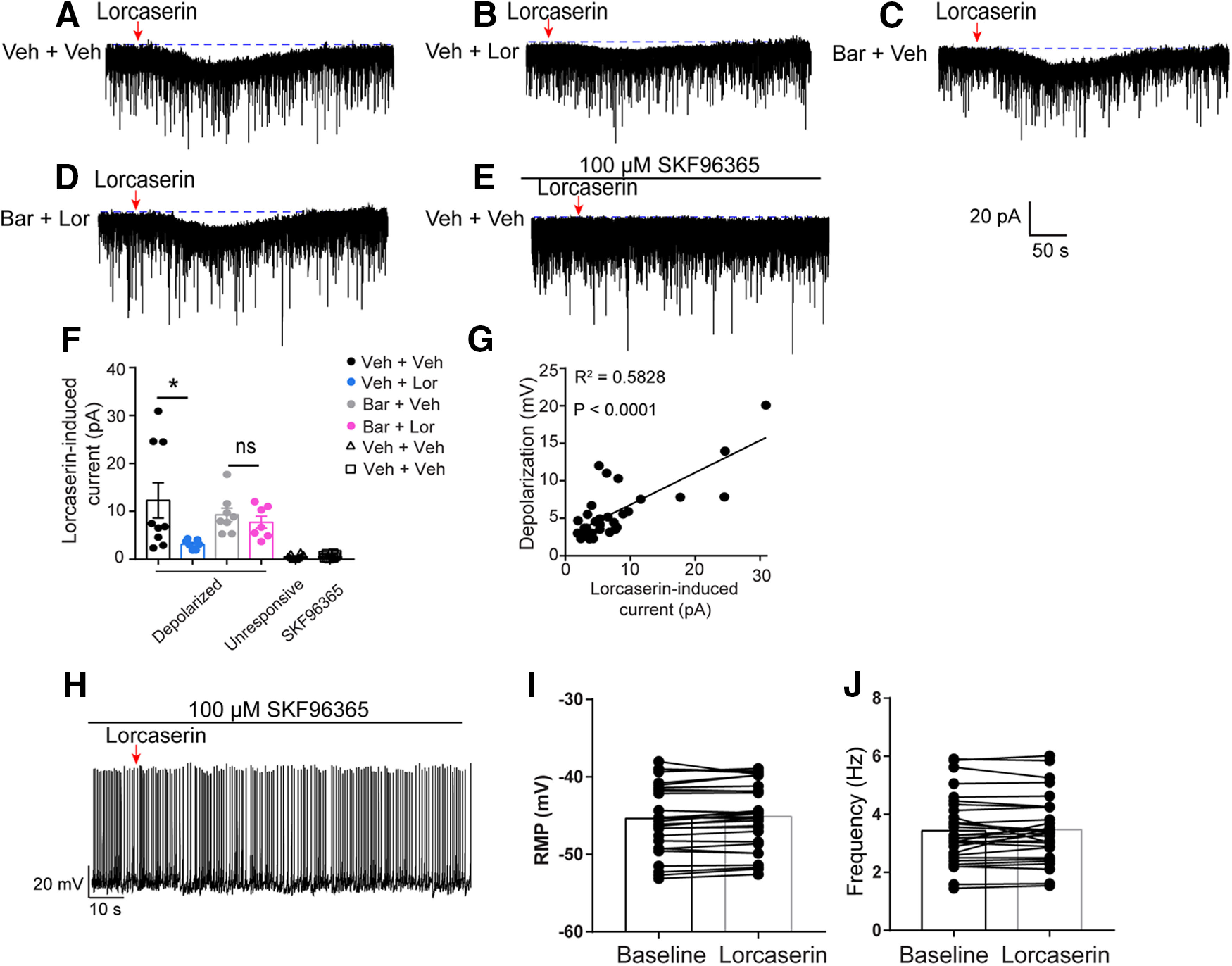Figure 6.

Lor depolarizes POMCARH neurons via TRPC channels. A–E, Representative traces of Lor-induced inward currents in POMCARH neurons after Lor treatment (100 μm, 5-s puff) in the absence of SKF96365 in Veh + Veh (A), Veh + Lor (B), Bar + Veh (C), Bar + Lor (D), or in the presence of SKF96365 in Veh + Veh (E) groups. F, Quantification of TRPC currents induced by Lor in various groups. Two-way ANOVA, Lor × Bar: F(1,27) = 5.68, p = 0.12, with post hoc Sidak's multiple comparisons test. *p < 0.05. N = 7–10 neurons per group from at least 3 mice. Data are presented as mean ± SEM with individual data points. G, Linear-regression analysis of the correlation between the depolarization level and the TRPC currents induced by Lor. Linear regression; R2 = 0.5828, p < 0.0001. H, Representative traces of action firing potential in POMCARH neurons before and after Lor treatment (100 μm, 5-s puff) in the presence of SKF96365. I–J, Quantification of the RMP (I) and firing frequency (J) of neurons treated by Lor in the presence of SKF96365. N = 30 neurons from at least 3 mice. Two tailed unpaired t tests. Data are presented as mean with single dots and line. ns, not significant.
